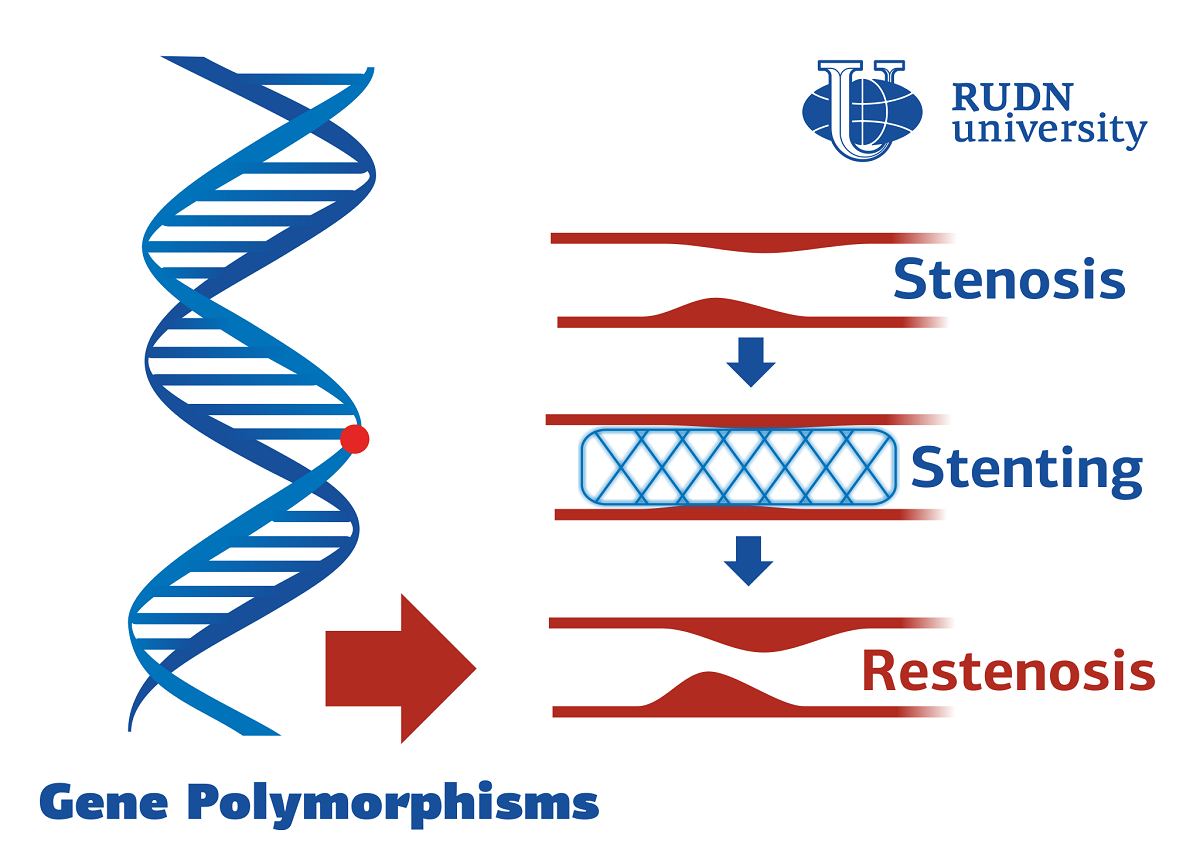RUDN University Doctors Find Out Gene Alterations that Can Lead to Restenosis
Coronary artery disease is a reduction of blood flow in the vessels below the heart muscle’s need for oxygen. It occurs, for example, due to stenosis, narrowing in the vessels. Revascularization is the most common treatment for patients suffering from this disease. A relatively new method of surgical treatment is drug-eluting stents (cylindrical mesh scaffolds). They reduced the risk of restenosis. However, with the increase in the number of such procedures, the number of restenosis also increases. The causes of restenosis are still not definitively known. RUDN University doctors have discovered genetic factors that can probably increase the risk of restenosis.
“Despite technological advances, restenosis remains the main limitation of interventional cardiology, leading to the need for reintervention and increasing the global stent market charge. Identification of risk factors and mechanisms underlying in-stent restenosis is necessary for understanding the process, the risk stratification, and optimal treatment development”, said Madina Azova, head of the Department of Biology and General Genetics at RUDN University.
The study involved 175 patients, including 62 people with intact coronary arteries as a control group, 59-without restenosis and 54-with restenosis after stenting. The study participants with restenosis were divided into subgroups depending on their age (older or younger than 65 years) and the period of restenosis development (less than or more than a year after percutaneous coronary intervention). All patients were followed up for 2 years. Scientist also studied the genotypes of the participants and revealed alterations in the genes that are responsible for the functioning of the coronary vessels.
It turned out that patients with restenosis and without it have differences in the genotype. Changes were found in the AGT gene, responsible for the synthesis of the angiotensin hormone, which causes vasoconstriction and increased blood pressure, in the genes coding for the angiotensin receptors AGTR1 and AGTR2, and in the REN gene, which encodes renin protein that regulates blood pressure through the angiotensin system. These data suggest that the predisposition to restenosis is due to the genotype. However, for final conclusions, it is necessary to conduct a study with a large number of patients.
“Thus, to choose the effective treatment tactics for patients with coronary artery disease, it is necessary to determine the patient’s genotype. This, along with age and clinical characteristics, will allow a comprehensive assessment of the risk and possible terms of the restenosis development after stenting to use the optimal personalized treatment”, said Madina Azova, head of the Department of Biology and General Genetics at RUDN University.
The results are published in the journal Biomolecules.
Sergey Ivanov, a scholar from St. Petersburg, has been named the first winner of RUDN University’s International Prize for Scientific Achievements in Mathematics, worth 5 million rubles.
Products derived from microalgae represent a cutting-edge development in the field of bioeconomy. The potential of this biological resource was discussed at the international research seminar “Foundations for a Green Sustainable Energy”, part of the BRICS Network University’s thematic group on “Energy”. The event was organized by the Institute of Ecology at RUDN University.
Ambassadors of Russian education and science met at a conference in RUDN University to discuss how they can increase the visibility of Russian universities and research organizations in the world, and attract more international students in Russia.
